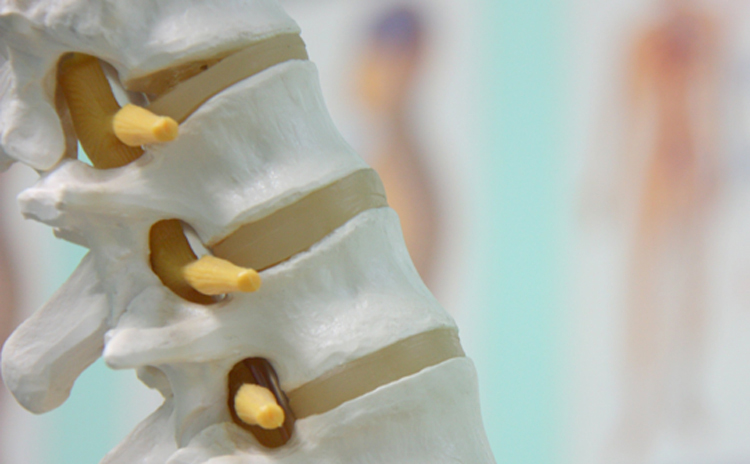
When people imagine the spine, they often see it as one continuous structure, when in reality, the spine is an incredibly complex grouping of intricate pieces. For people with back pain, it can be difficult to know exactly which piece is causing issues. Back pain doesn’t happen in isolation — there is always a reason behind it.
Whether you’re putting too much stress on a particular part of your back or experiencing muscle pain, it can save you both time and energy to understand all of the individual structures that comprise the human spine.
The back bone’s connected to the…
Most of the spine consists of small bones called vertebrae that are stacked on top of one another to form the spinal column. Adults have 24 vertebrae in total, running from the base of the skull all the way down to the pelvis. These bones can be broken down into four categories: cervical, thoracic, lumbar, and sacral.
Each vertebra is separated by an intervertebral disc, made up of cartilage and collagen fibers. These rubbery pads provide support and mobility for the spine. Disease, aging, and injury can cause compression or thinning, leading to wear on the vertebrae they are meant to support. Alternately, discs can swell or become distorted due to stress or injury. This is what is know as a herniated disc.
The vertebrae are connected by the spinal cord, the main connection between the brain and the extremities. Injuries to the spinal cord can occur when it is punctured by a shattered piece of vertebra. The majority of injuries in this region result in the loss of feeling in a certain part of the body, such as a hand or foot, while the more severe cases could result in full paralysis.
Cervical Spine
The top most curve of the spine, just below the skull, is the cervical region. There are seven smaller vertebrae that make up this area. The cervical spine plays a very important role in supporting the movement of the head and supporting blood flow to the brain.
Problems with an individual vertebra like herniated discs and compression can occur here. With age, it is also common to develop arthritis in this part of the body, leading to pain in the shoulder blades and neck. Most of us have dealt with small issues in this part of our spine in the form of neck stiffness which can be caused by muscle strain through daily activities.
Tip: To avoid neck stiffness and other cervical issues, it is good practice to stretch once or even multiples times per day.
Thoracic Spine
The second curve, the upper middle region, is called the thoracic spine. This is the longest section of the spine and consists of 12 medium-sized vertebrae. When stretching for physical activities, you may notice that you have less flexibility in this area. That is because each vertebra is connected to the ribcage. You may find it annoying during your yoga practice, but this connection gives stability to the spine and actually creates space for vital organs.
When you experience upper and middle back pain, it is frequently due to muscular problems. Tension in this area can be caused by strain or simply just poor posture. The intervertebral discs in the thoracic spine tend to be much thinner, so there is much less movement allowed between the vertebrae.
Tip: For a healthy thoracic spine, it is good practice to maintain proper posture while standing, sitting, and lying down.
Lumbar Spine
In the lower back, where the spine curves inward toward the abdomen, you find the five vertebrae that make up the lumbar spine. These are the thickest of all the vertebrae. Lower back pain is very common- the lumbar spine is connected to the pelvis, so this is where most of the weight bearing and movement take place.
Muscular problems, herniation, disc degeneration, and arthritis are all common in the lumbar region. It is also possible for one injured vertebra to slip forward over the one below it.
The sciatic nerve also originates in the lower back and extends down each leg. This leg pain is known as sciatica and is the most common pain caused by nerve compression in the lower back.
Tip: A great way to maintain lumbar health is to keep your core muscles strong.
Sacrum and Coccyx
The sacral region of the spine lies below the lumbar and above the coccyx (or tailbone). It has a triangular shape and actually consists of five vertebrae that are fused together to form one structure. In women, the sacrum is wider and shorter than in men and can often lead to joint pain known as sacroiliac joint dysfunction from too much or too little mobility of the sacral joint.
The final structure in the spine is the coccyx. When sitting, it serves as a shock absorber for your spine. Events such as childbirth or falling can create an unstable coccyx, which leads to inflammation and pain in the pelvic region.
Back pain can be detrimental to your daily life, eating up time and energy just to do what would otherwise be simple tasks. Unfortunately, somewhere between 80-90% of adults suffer from spinal pain or injury at some point. Because of these staggering numbers, it is important to keep your spine as healthy as possible.
Take some time out of every day to think about your back by:
- Getting enough calcium in your diet to avoid problems like osteoporosis and arthritis
- Using the proper techniques for lifting and carrying heavy objects
- Doing a few quality stretches for you back every day
- Working out with your safety in mind
- Maintaining good posture throughout your entire day
